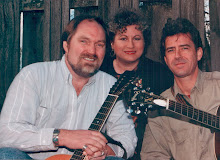Instead of me writing posts and having people comment, I'm aspiring for parents, teachers, tutors or anyone else to post very specific examples of a learning problem. A NON-SPECIFIC problem would be: my son has dyslexia. A spedific problem would be: sometimes, by daughter reads the letter d with a /b/ sound and the letter b with a /d/ sound. We don't need speculation on why the problem exists: just state the problem itself as specifically as possible.
I'd like to respond with a comment that outlines a remedy for the problem that is as specific as the problem identified. When I don't have a response I have complete confidence in, I'll get one from my small group of friends and colleagues who routinely cut to the chase to successfully solve problems. Solutions will be apolitical, with with respect to the politics of education or national and local politics.
My next post will address b/d reversals.
Sunday, November 22, 2009
Subscribe to:
Post Comments (Atom)

If we look at the letter "h" for example, we can turn it backward and end up with, of course, a backward h. If we turn the letter 'b" backward, we DON'T end up with a backward b: we end up with a FORWARD letter d. The names of the letters sound almost identical, as do the sounds for the letters. What distinguishes that? Spatial orientation.
ReplyDeleteWrite a big letter "b" on a piece of acetate. Tell the student it is a b and ask the student to tell you the name of the letter. Now start to rotate the piece of acetate along the vertical center axis. (The result will be the student looking at a "d" now.) As you are rotating slowly, however, tell the student it's still a b, it's still a b, it's still a b, but when the opposite side starts to appear, say now it's a d, not it's a d, now it's a d. You are dynamically showing the student that spatial orientation is the big difference between b and d. Initially, exaggerate the pronunciation of the letters to make them sound less similar. Do this a few minutes a day for a few days (if necessary). Rotate the acetate and ask the student, "What letter?" Correct by telling answer, then rotating acetate and again asking, "What letter." Start with b sometimes and with d sometimes. Continue to exaggerate the differences in the sounds of the letters until the student responds perfectly several times in a row. You can start with sounds instead of letter names, but under no circumstances should you work on sounds and letter names at the same time.
Tell us how this works for you. Stick to details.
November 22, 2009 4:41 AM